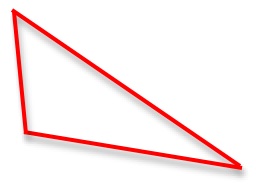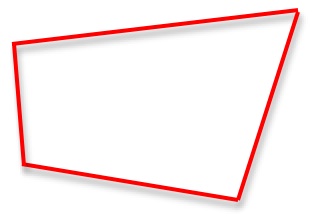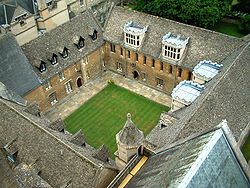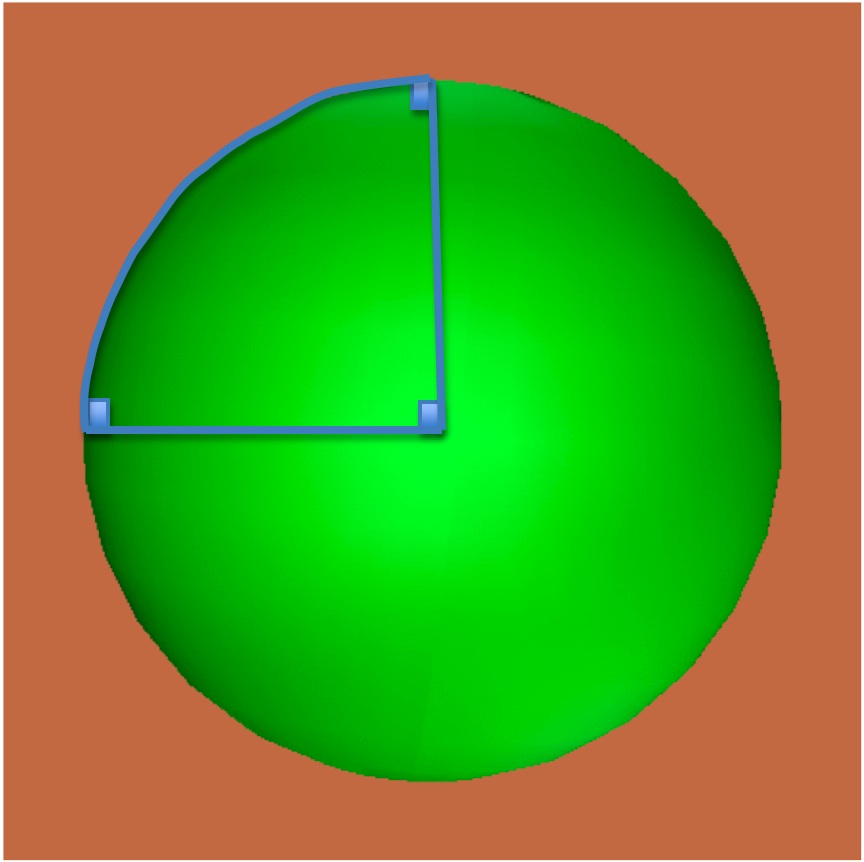The strangeness of mathematical language
Posted by: Gary Ernest Davis on: September 30, 2010
The four branches of arithmetic: ambition, distraction, uglification and derision. The Mock Turtle
Polylaterals
We all know what a triangle is: its a closed figure with 3 sides.
 But the triangle’s generic name sounds like it should have 3 angles: TRI-ANGLE. Well, of course, it does have 3 angles, one opposite each of the 3 sides. So why do we call a closed figure with 3 sides a triangle? why don’t we call it a TRI-LATERAL, for 3 sides?
But the triangle’s generic name sounds like it should have 3 angles: TRI-ANGLE. Well, of course, it does have 3 angles, one opposite each of the 3 sides. So why do we call a closed figure with 3 sides a triangle? why don’t we call it a TRI-LATERAL, for 3 sides?
The next figure along, so to speak, would be a four sided figure which we do indeed refer to as a QUADRI-LATERAL, for 4 sides.
But why don’t we call it a QUADR-ANGLE? Because that name is reserved for a special sort of 4-sided figure associated with buildings. It’s generally rectangular – a square or oblong (now there’s a strange word) – surrounded by or abutting a building:
Hang on, how does rectangular mean a 4-sided figure, especially a square or an oblong? Shouldn’t RECT-ANGULAR mean right angles? Yes it does, and a plane figure with all right angles is a square or an oblong (but also known of course, as a rectangle).
Of course if we lived on a strange place, such as a sphere – thank goodness we don’t! – we could have a triangle with all angles right angles, so qualifying as a rectangle with only 3 sides:
So what’s an oblong, and who came up with a name like that? Well word on the street is that the name comes from OB (meaning quite, very, or rather) and LONG (meaning, … long). Someone named this around 1375–1425 in Middle English. So an OB-LONG is a rather long rectangle, meaning it’s not a square. But I think this use of “OB” is a little strange, because OB also means “in the way” as in OB-STINATE (in the way + stand), OB-JECT (in the way+ throw), and “against” as in OB-DURATE (against + hard). The OB seems a little bit of an overworked prefix.
So moving on we come to a 5-sided closed figure which, of course, we call a PENTA-LATERAL, meaning a 5-sided figure. Except we don’t: it’s a PENTA-GON meaning 5-angles. Hang on, that being the case, why isn’t a triangle known as a TRI-GON?
The next figure along would be a SEXA-GON – a 6-sided figure – except it’s not it’s a HEXA-GON, because we try to keep sex out of geometry.
So on we go now with lots of GONS – septagon, octagon, nonagon, … and not another LATERAL in sight.
Polynomials
The quadratic polynomial was being interviewed about his function in life:
INTERVIEWER: “So, p(x), I understand that you’re not often satisfied?”
p(x): “That’s correct. Only a couple of numbers satisfy me.”
INTERVIEWER: “I understand that is one of those numbers.”
p(x): “Yes. I find  very satisfying.”
INTERVIEWER: “Is that a bit irrational?”
p(x): “It’s quite irrational, but there’s no accounting for what satisfies a polynomial.”
INTERVIEWER: “And are there any other numbers that satisfy you.”
p(x): “Well there’s of course.”
INTERVIEWER: “That’s also a bit irrational, isn’t it.”
p(x): “Quite irrational, but there you are. I’m not easily satisfied.”
INTERVIEWER: “Are there any other numbers that satisfy you?”
p(x): “No, that’s it.”
INTERVIEWER: “Well there you have it – the strangely unsatisfying life of a quadratic polynomial. The numbers that satisfy polynomials are known as roots. Polynomials do not have many roots, being satisfied by a mere handful of numbers. This is a situation well understood by Australians.”
Abscissa
This just means the line in a Cartesian coordinate system over which the independent variable ranges, usually drawn horizontally.
The word AB-SCISSA comes from AB (meaning off or from) and SCINDERE (meaning to cut). So an abscissa is supposed to be something that cuts something off from something else. This was apparently named in 1694 by some dude. Nowadays you might just want to say: “the independent variable axis” or “the horizontal axis”. But if you want to appear knowledgeable and superior, especially if you are a high school mathematics teacher, or if you are a student out to impress your teacher, then”abcissa” will do it.
What is a gerbe?
I hoped you wouldn’t ask that. Wikipedia sums it up as succinctly as anywhere else:
“A gerbe on a topological space X is a stack G of groupoids over X which is locally non-empty (each point in X has an open neighbourhood U over which the section category G(U) of the gerbe is not empty) and transitive (for any two objects a and b of G(U) for any open set U, there is an open set V inside U such that the restrictions of a and b to V are connected by at least one morphism).”
Well, of course! Now you put it that way it’s more or less …. still unclear!
Why do mathematicians do this? Is it just to appear smug and superior to the rest of the world. Well no, but there is an element of that:
Piotr: “Heinrich, I think that gerbe you were talking about earlier must be locally trivial.”
Heinrich; “Why, yes, that’s so Piotr. Did I not make that clear?”
Let’s face it: who among us would not love to able to casually toss off such an apparently abstract discourse?
But not all mathematicians are just tossing off abstract discourse:
Heinrich: “So let’s take a transitive locally non-empty stack of groupoids over a torus …”
Michael: ” You mean a gerbe?”
Heinrich: ” Yes, that’s right. A gerbe on a torus.”
So you can see that it helps Heinrich not to have to say “a transitive locally non-empty stack of groupoids over a topological space” but to be able to say, simply, “a gerbe” instead. What a time saving shortcut!
This habit of strange names in mathematics comes from the relatively rarefied practice of high-octane advanced mathematics. It’s a matter of convenience, and quite different to when someone says “His Royal Highness, the Prince of Wales” when what you know they mean is “Charles Windsor”, or at least, “Charles Windsor in the capacity bestowed upon him by his mama.”

Thanks to proper naming conventions, no-one would mistake the Prince of Wales (a.k.a. Tywysog Cymru) for a gerbe.
There’s much more I could write about strange mathematical names … and at some point in the future I probably will.
Postscript
flyingcoloursmaths (Colin Beveridge) points out that we do see trigon in trigonometry, from “trigonon” + “metria”. This brought home to me the English-centered view of mathematical words I was using, as if all mathematics is written in English – which it was not, and is not. The Greek word for triangle is Ï„Ïίγωνο, and for quadrangle is τετÏάγωνο.
In french a triangle is a “triangle” and in German it is a “dreieck”; here “drei” is “three” and “ecke” is “angle”.
How do people in different languages refer to triangles and other polygons, I wonder.
By the way, the English translation of “gerbe” is “sheaf”, but that word was already in common use in mathematics when Jean Giraud introduced the definition of a gerbe in 1971.
9 Responses to "The strangeness of mathematical language"
funny and instructive at the same time. enjoyed it!
I think you meant prefix, not suffix, in your discussion of ‘”OB”.
Yes I did! Thanks very much for the correction.
We do see tri-gon in the word trigonometry :o)
Bravo! Great observation.
In Portuguese we don’t have the word oblong, we call them rectangles (and a square is just a regular rectangle). It’s very self-evident. I tend to believe that polygons with more than four sides have regular number-gon names because they aren’t as used by everyday people (non-geometers). Hexagon is the natural sequence for pentagon, since their both Greek prefixes. We also use heptagon for seven sides.
Please can someone give a simple, clear, explanation of a gerbe, with an example by analogy. Thankyou.




September 30, 2010 at 11:52 am
I’m reading your blog and think it is very interesting and engaging. It pops!
September 30, 2010 at 12:45 pm
That’s not surprising given your close association with the author!